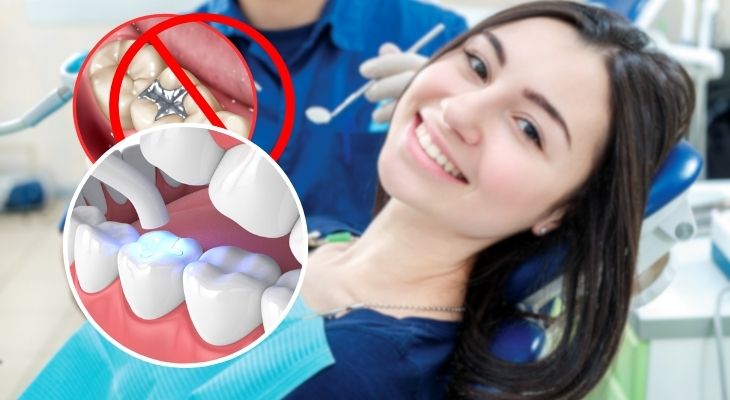
How much silver is in your mouth? If you are between the age of 24 and 65+, chances are good you have a cavity and it is highly likely that your fillings are made of silver amalgam. Those silvers that show in your mouth when you laugh. For a long time, amalgam was the filling choice- as it was affordable and durable, often lasting 10-15 years. However over the times new technology has come and made newer, safer, more effective ways to fix your teeth.
But what if you have one of these old silver fillings? Should you get it remove? Is it safer? This question must have come in your mind. Here is why you should consider replacing your old fillings:
-
Defective silver fillings often cause the teeth to become discoloured as well as it can stain the soft tissue around that filling.
-
Silver fillings have limited life span. Life of an amalgam filling is 10-15 years. Over the time fillings starts to wear away, exposing the areas from where bacterial can sneak in causing tooth decay.
-
Amalgam contains mercury. Around 50% of the amalgam is made up of mercury, which can be potential risk for some patients.
-
Amalgam reacts to change in temperature. As 50% of the filling mercury, which is metal, it reacts to change in temperature. When you take something hot it expands leading to cracks or fracture and when you take something cold it contracts causing gaps around the filing. This expansion and contraction can weaken the teeth.
-
If you original filling caused foundational damage to your tooth, your existing silver fillings may lead to further damage down the road.
-
If a silver amalgam filling corrodes, the mercury or tin can leak into the inner walls of the tooth, changing its colour.
-
Your fillings exhibit signs of significant wear and tear; your teeth can be vulnerable to further decay and infection. In that case, it may be best to consider replacing your old fillings with a composite or an alternative filling.
What solution is best for you?
-
Composite fillings: if the cavity left by the removed decay or filling is not too large, composite resin can provide cosmetically appealing filling alternatives. Composite resin is best choice for anterior fillings. It even cost effective.
-
Inlays or Onlays: inlays or onlays are particularly made of composite resin, porcelain, or gold. Inlays and onlays are best for restoring large cavities. An inlay is custom made to fit the prepared cavity, while an onlay covers the entire chewing surface of the tooth. If you don’t mind spending more money to get long lasting result, then you can opt for this.
-
Porcelain Veneers: it is excellent choice for front tooth with stained or defective fillings. Porcelain does not stain and is more long lasting solution, making it a good choice, especially if you also want to improve the shape and shade of your teeth. It also closes the minor spaces between your teeth.
-
Crown: it represents a long lasting treatment alternative involving reducing the tooth and covering the remainder with custom made crown. When the tooth has extensive decay and/or severe staining following the removal of large fillings, then crown is preferred choice.

